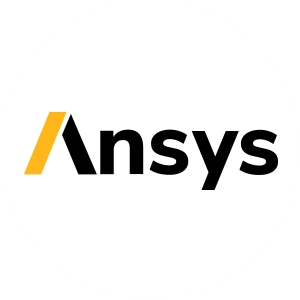
-
ANSYS – Detailed Explanation
ANSYS is a powerful engineering simulation software used for Finite Element Analysis (FEA), Computational Fluid Dynamics (CFD), Electromagnetics, and Multiphysics simulations. It’s widely used in industries like aerospace, automotive, electronics, civil engineering, and manufacturing.
1- On which platform are the tools used?
✅ Desktop Platforms:
- Windows (Primary Platform): Windows 10/11 (64-bit).
- Linux: Supported for high-performance computing (HPC) and enterprise environments.
- macOS: Not officially supported (requires virtualization software like Parallels or Boot Camp).
📱 Not Available for:
- Mobile devices (Android, iOS).
- Web-based usage (except cloud-based solutions like ANSYS Cloud).
💡 ANSYS software packages are mostly run on powerful desktop computers or server systems.
2- What hardware requirements are needed?
🔹 Minimum System Requirements:
- Processor: 64-bit Intel or AMD processor with SSE2 support.
- RAM: Minimum 8 GB (Recommended: 16 GB or higher for complex simulations).
- Storage: Minimum 25 GB free disk space.
- Graphics: NVIDIA, AMD, or Intel graphics card with updated drivers (OpenGL compatible).
- Screen Resolution: 1920×1080 or higher.
- Operating System: Windows 10/11 (64-bit), Linux (Red Hat/CentOS, SUSE, Ubuntu).
💡 High-performance simulations require powerful hardware, especially for CFD and Multiphysics analysis.
3- Installation and membership stages
🔹 Installation Steps:
- Download the installer:
- From the official ANSYS website: ANSYS Downloads
- Run the installer:
- Follow the setup wizard to select components (ANSYS Workbench, Fluent, etc.).
- License Activation:
- Academic users can activate the free student version.
- Professional users need to input a license key provided by ANSYS.
🔹 Membership & Account Setup:
✅ ANSYS Account Creation:
- Required to download and activate the student version.
✅ License Types:
- Student Version (Free): Limited capabilities but useful for educational purposes.
- Commercial License: Paid licenses with extensive features for professional use.
💡 The student version provides basic simulation tools with mesh and node limits.
4- What can it be used for?
ANSYS is a multi-purpose tool for simulation and analysis of engineering systems.
🔹 Primary Uses:
✅ Structural Analysis (FEA):
- Stress, strain, deformation, thermal analysis.
- Product design validation and optimization.
✅ Fluid Dynamics (CFD):
- Analyzing fluid flow, heat transfer, aerodynamics.
- Turbo-machinery simulations, combustion analysis.
✅ Electromagnetics:
- Simulating electromagnetic fields, antennas, signal integrity, EMI/EMC.
✅ Multiphysics:
- Coupled simulations like thermal-fluid interaction, electro-structural analysis.
✅ Material Analysis:
- Predicting material behavior under different conditions.
✅ Optimization:
- Design of experiments, sensitivity analysis, parametric optimization.
💡 ANSYS is one of the most comprehensive tools for simulation-based engineering.
5- What is its prominent feature compared to other tools?
✅ Unique Features of ANSYS:
- Comprehensive Simulation Suite: Integrates FEA, CFD, Electromagnetics, and Multiphysics under one platform.
- Highly Scalable: Compatible with high-performance computing (HPC) for large-scale simulations.
- Advanced Meshing Tools: Allows for detailed geometry analysis with high-quality meshes.
- Automation & Scripting: Python-based scripting to automate repetitive tasks.
- Cloud Computing: Access via ANSYS Cloud for complex simulations without local hardware limitations.
- Detailed Material Library: Extensive material database for realistic simulations.
💡 ANSYS is preferred for its accuracy, reliability, and ability to handle complex, coupled simulations.
6- Sample application made with pictures
Example 1: Structural Analysis of a Bridge
- Objective: Evaluate stress distribution and deformation under varying loads.
- Tool Used: ANSYS Mechanical (FEA).
- Result: Color-coded stress contour plot showing areas of maximum stress.
Example 2: Fluid Flow Simulation
- Objective: Simulate airflow over a car body to reduce drag.
- Tool Used: ANSYS Fluent (CFD).
- Result: Streamline visualization showing airflow patterns and pressure distribution.
7- Which courses can it be used in and is compatible with?
ANSYS is widely used in engineering and physics courses.
🔹 Relevant Courses:
- Mechanical Engineering: Structural analysis, thermodynamics, fluid mechanics.
- Aerospace Engineering: Aerodynamics, structural analysis, thermal management.
- Electrical Engineering: Electromagnetic analysis, antenna design.
- Civil Engineering: Structural integrity analysis, seismic simulation.
- Biomedical Engineering: Fluid dynamics in blood flow, medical device simulations.
- Materials Science: Material properties analysis, failure prediction.
💡 ANSYS is commonly included in university curricula for simulation-based learning.
8- Is it free?
✅ Yes, a limited free version is available for students.
🔹 Free vs Paid Versions:
Feature
Student Version (Free)
Paid Version
FEA & CFD Capabilities
✅ Limited
✅ Full Access
Multiphysics
❌ Limited
✅ Full Access
Node Limit
32,000 nodes
Unlimited
Optimization Tools
❌ Limited
✅ Advanced
High-Performance Computing (HPC)
❌ Not Available
✅ Supported
Price Range
Free (Student)
From $5,000 to $50,000+ (Commercial)
💡 The student version has limitations, but is great for learning purposes.
9- Links related to ANSYS
🔗 Official Website: ANSYS
🔗 Student Version Download: ANSYS Student
🔗 Documentation & Tutorials: ANSYS Learning Hub
🔗 Support & Forums: ANSYS Forum🔹 Conclusion
ANSYS is a robust tool that supports complex simulations in various engineering disciplines. It provides high accuracy and detailed analysis for both educational and industrial use.
🚀 Why use ANSYS?
✔ Comprehensive Simulation Tools: Integrated FEA, CFD, and Multiphysics.
✔ Scalable Performance: Ideal for both small-scale and high-performance computing.
✔ User-Friendly Interface: Simplified workflows through ANSYS Workbench.
✔ Industry-Standard Tool: Widely used by professionals worldwide.